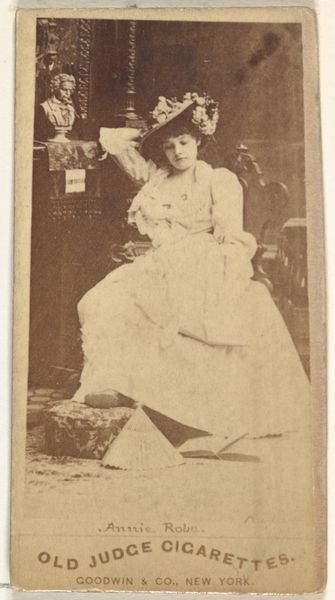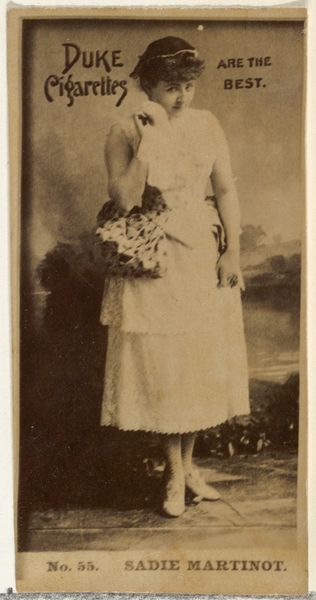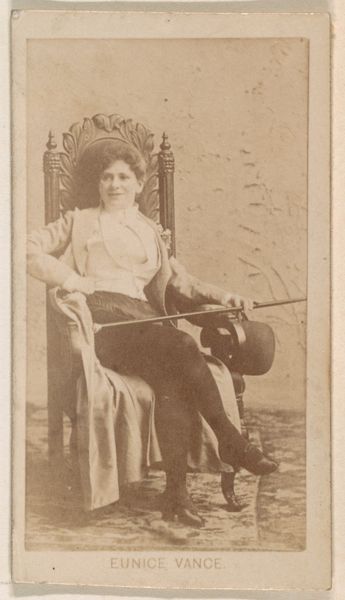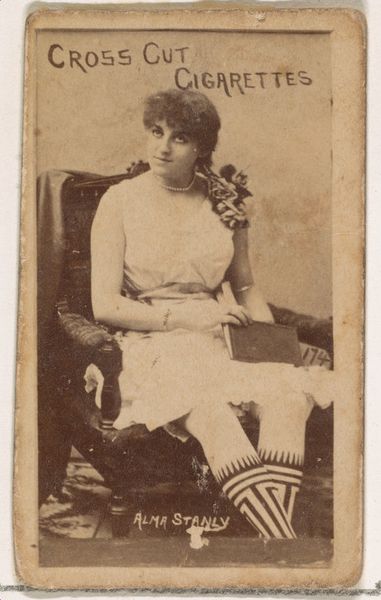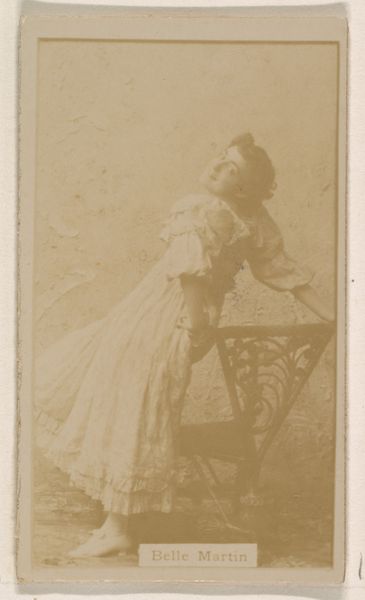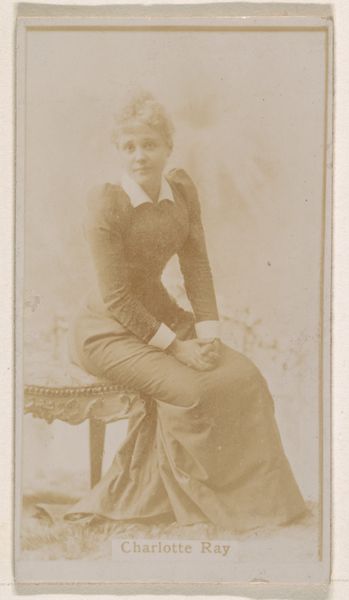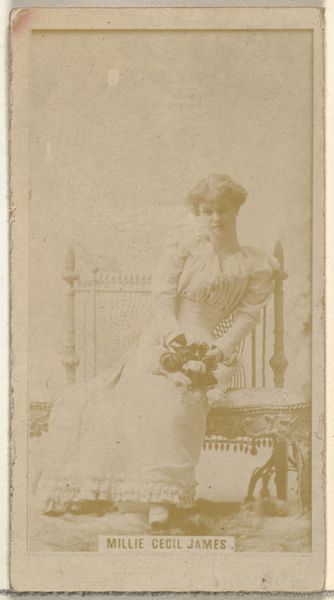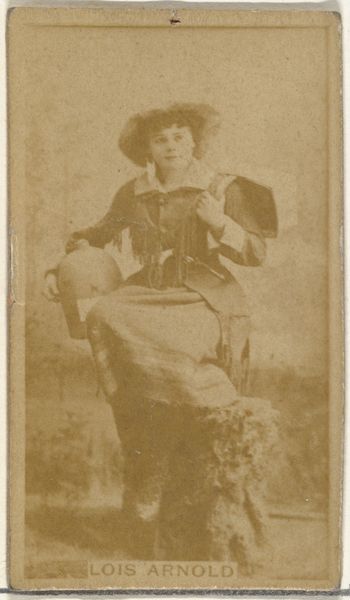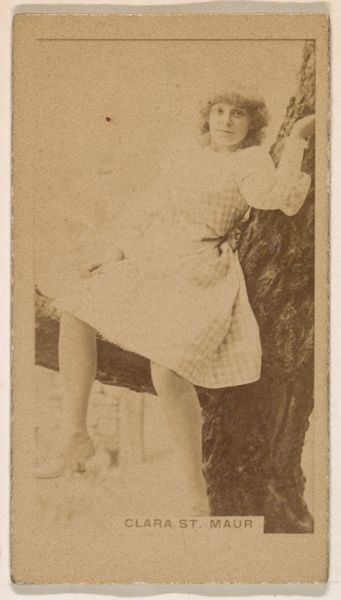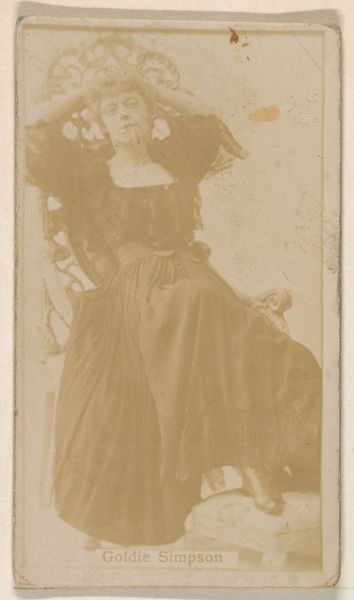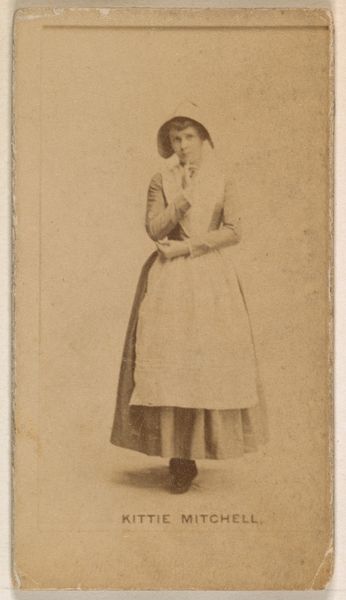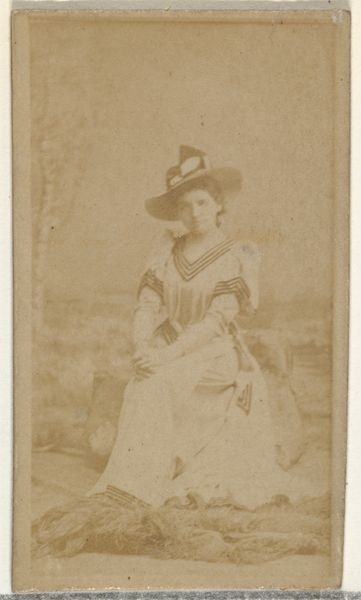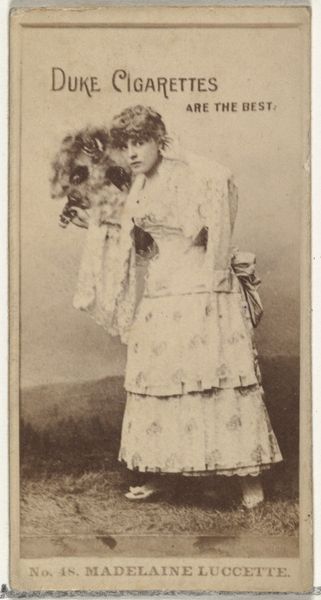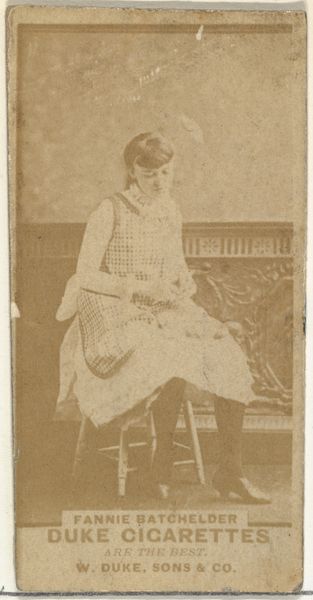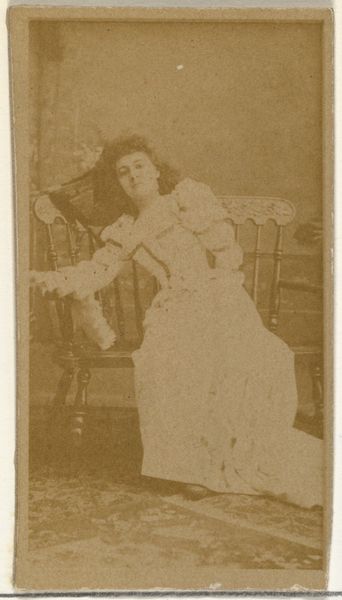
Dimensions: 11.5 × 8.6 cm
Copyright: Public Domain
Editor: So this is "Untitled (Portrait of Seated Man and Woman)," an anonymous photograph dated sometime between 1850 and 1899. It reminds me a bit of a wedding photograph. What jumps out at you when you see it? Curator: The institutional context in which photographs like these circulated is what fascinates me. It looks like a formal portrait, probably taken in a studio. Back then, photography was becoming increasingly accessible, democratizing portraiture. What do you make of their attire and setting? Editor: They seem dressed up, especially him in his suit. But the background looks almost painted, a backdrop. Is that typical? Curator: Exactly. The backdrop speaks volumes. Often these studios used generic painted scenes—castles, gardens—to lend an air of sophistication and importance. It reveals a desire to participate in a visual culture previously reserved for the wealthy who commissioned painted portraits. Think about who had access and the power that image implies. What social performance are they enacting? Editor: So, it’s not just a personal memento, but a statement about their social aspirations? A way to say, "We belong?" Curator: Precisely. And who gets to make such statements is always mediated by economic and socio-political realities. This image, while seemingly simple, opens a window into understanding how photography reshaped notions of representation and social class. How do we think about the proliferation of imagery that’s possible now, thanks to this revolution? Editor: I never considered the democratizing effect of early photography in quite this way. Thanks, that gives me a lot to think about. Curator: Absolutely. And for me, this just strengthens the idea that a visual culture shapes reality, and whoever shapes visual culture wields the power.
Comments
No comments
Be the first to comment and join the conversation on the ultimate creative platform.
